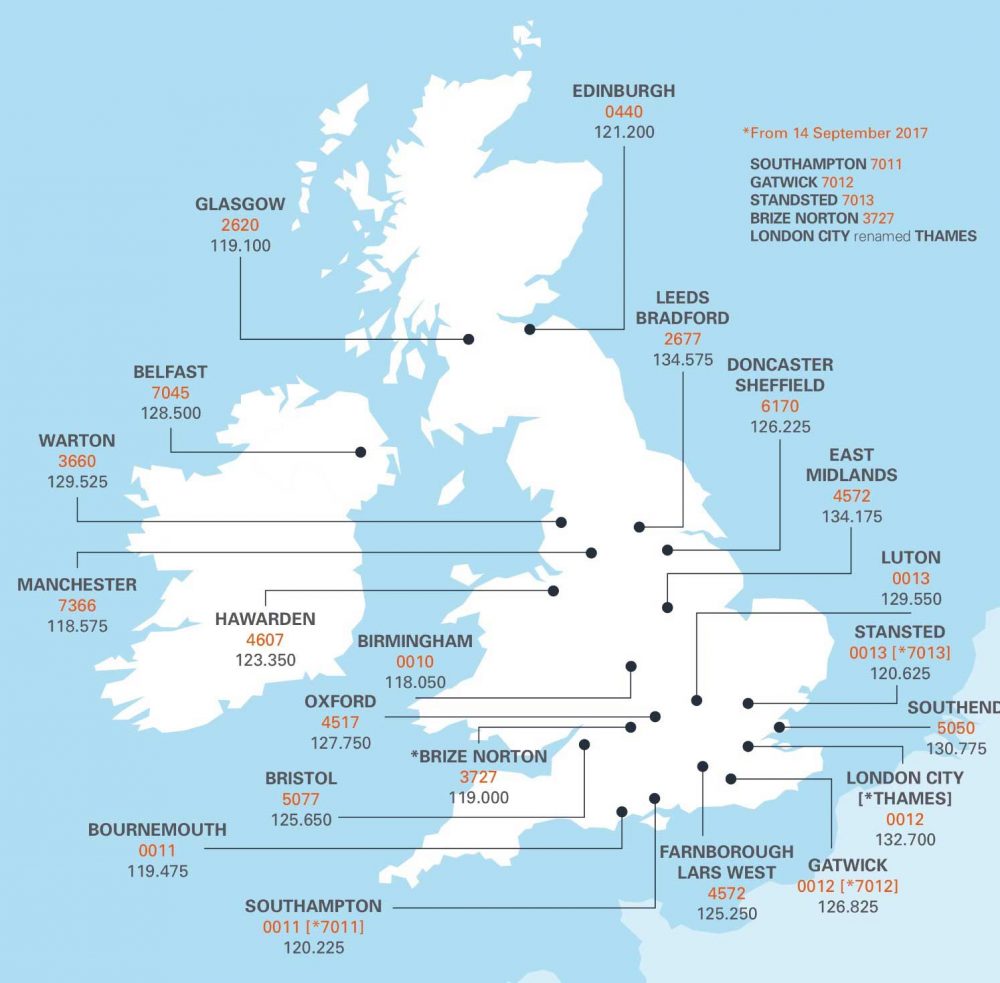Many of the current listening squawks will change this Thursday, 14 September, and five more have been added, making a total of 21 around the UK.
A listening squawk enables an air traffic controller to alert a pilot if their aircraft looks likely to infringe controlled airspace. The pilot needs to turn on the aircraft’s transponder and select the listening squawk, using ALT (Mode C) if available. Tune in to the allotted frequency without transmitting, and listen out for your callsign or position.
Air traffic control will know that you are listening out and can call you on the frequency if you are getting too close to controlled airspace. Once you leave the area, or change radio frequency, change the transponder code back to 7000.
Squawk changes from 14 September 2017
- Liverpool Squawk 5060 on frequency 119.850 MHz
- Brize Norton Squawk 3727 on frequency 119.000 MHz
- Southend Squawk 5050 on frequency 130.775 MHz
- Southampton changed from 0011 to 7011 (frequency remains 120.225 MHz)
- Bournemouth assumes sole use of 0011 on frequency 119.475 MHz
- Luton assumes sole use of 0013 on frequency 129.550 MHz
- Stansted changes from 0013 to 7013 (frequency remains 120.625 MHz)
- Gatwick changes from 0012 to 7012 (frequency remains 126.825 MHz)
- London City becomes Thames using 0012 (frequency remains 132.700 MHz)
An updated listening squawk poster is available here: http://airspacesafety.com/wp-content/uploads/2017/05/SQUAWKandLARS_A4_SEPT_2017.pdf
Lower Airspace Radar Service (LARS) changes from 14 September 2017
East Midlands (134.175 MHz) to 30nm.
An updated LARS poster is available here: http://airspacesafety.com/wp-content/uploads/2017/09/LARS_who-will-you-be-talking-to_14SEP2017.pdf













4 comments
Useful info thanks. Looks like a typo in the East Midlands frequency though.
This is good news.
In the article you have changed the East Mids frequency to 137.175, whereas the LARS poster remains at the current frequency of 134.175. is this a typo?
Yes, it was a typo, not ours originally but thanks for pointing it out.
I find the previous format clearer with the coloured blocks down each side.